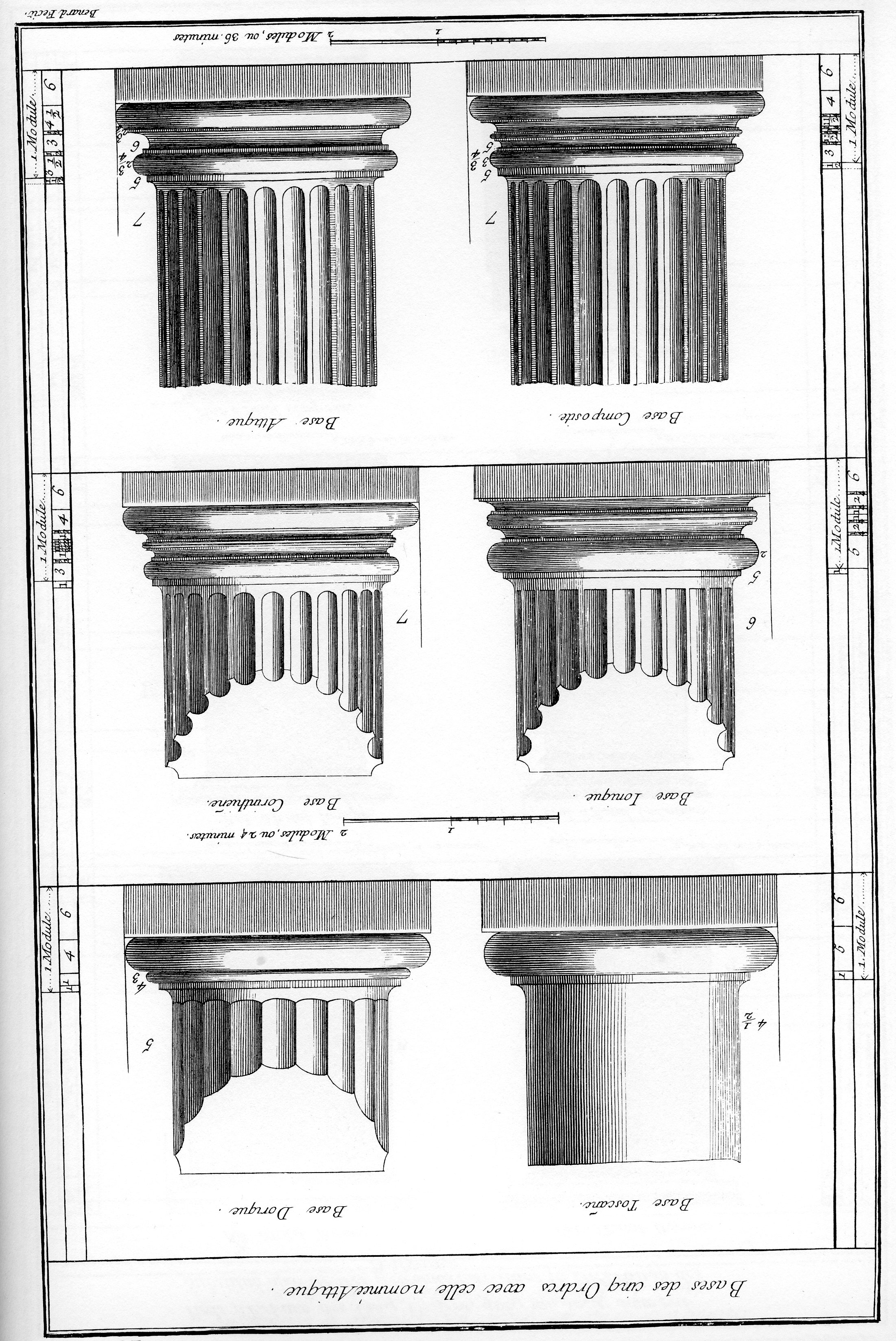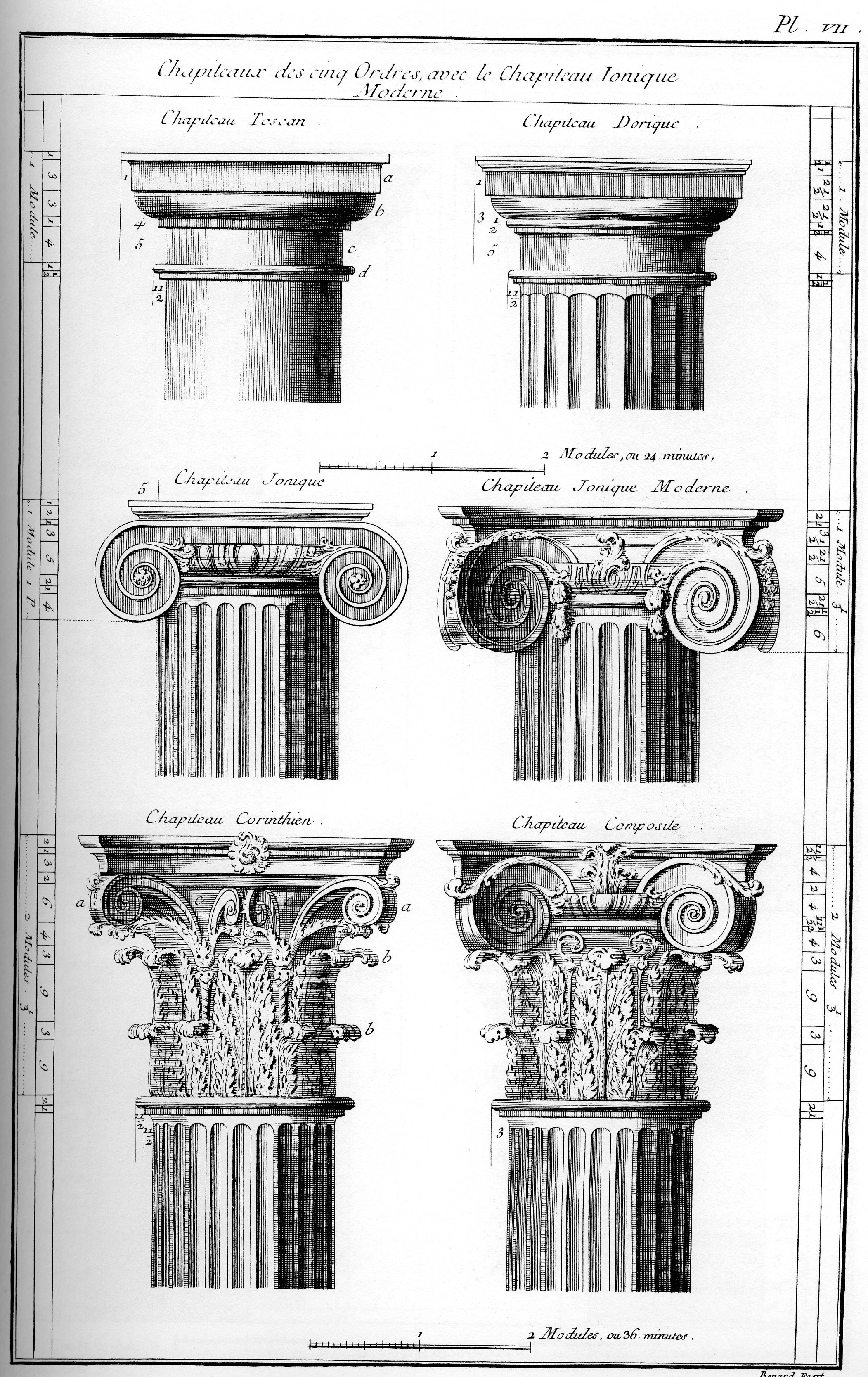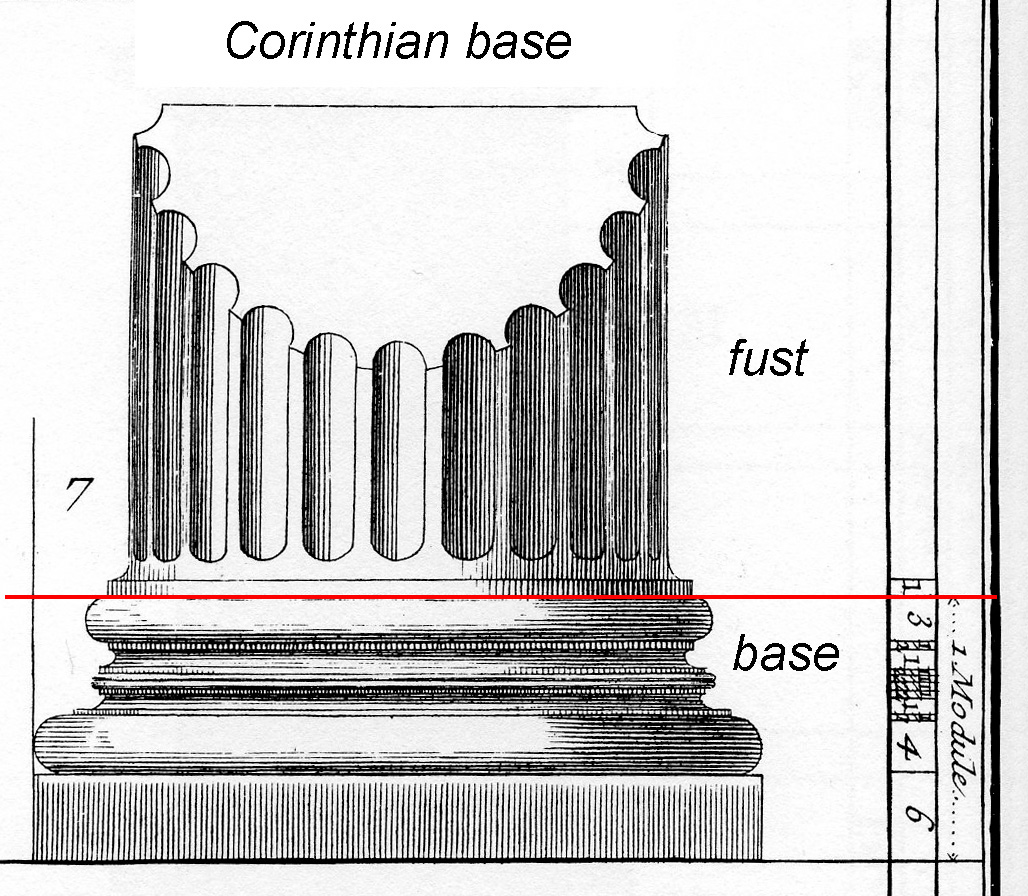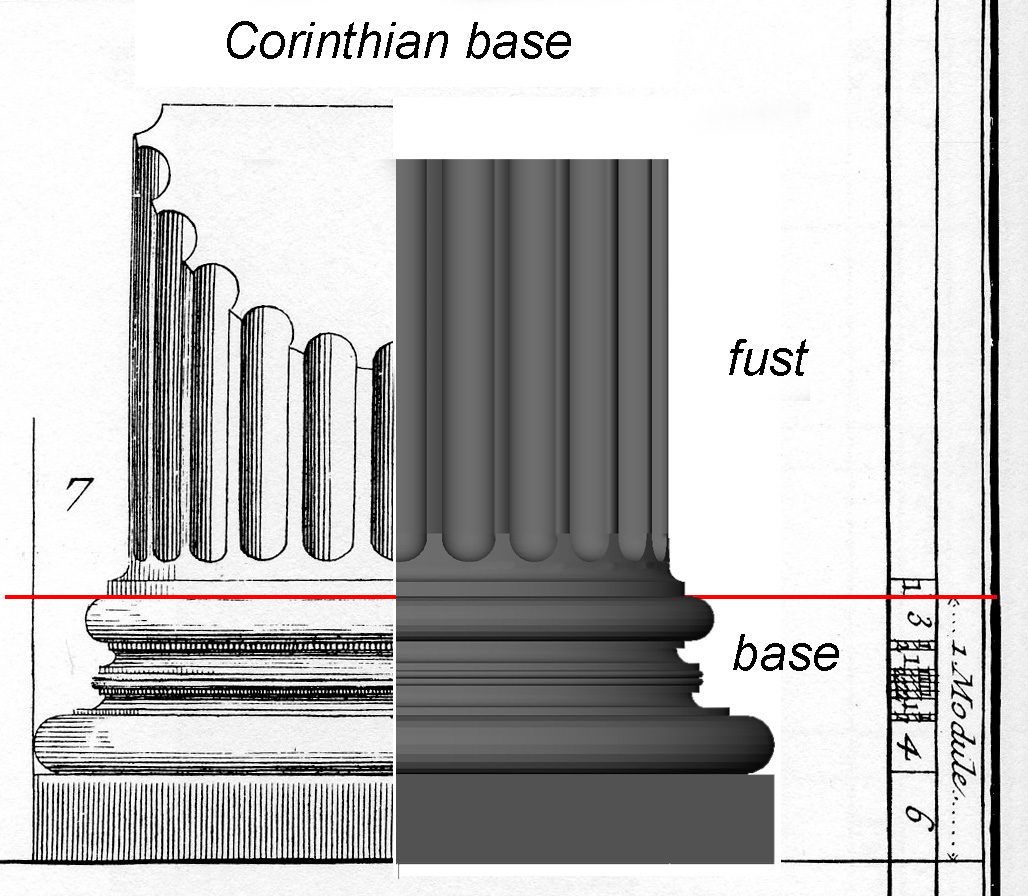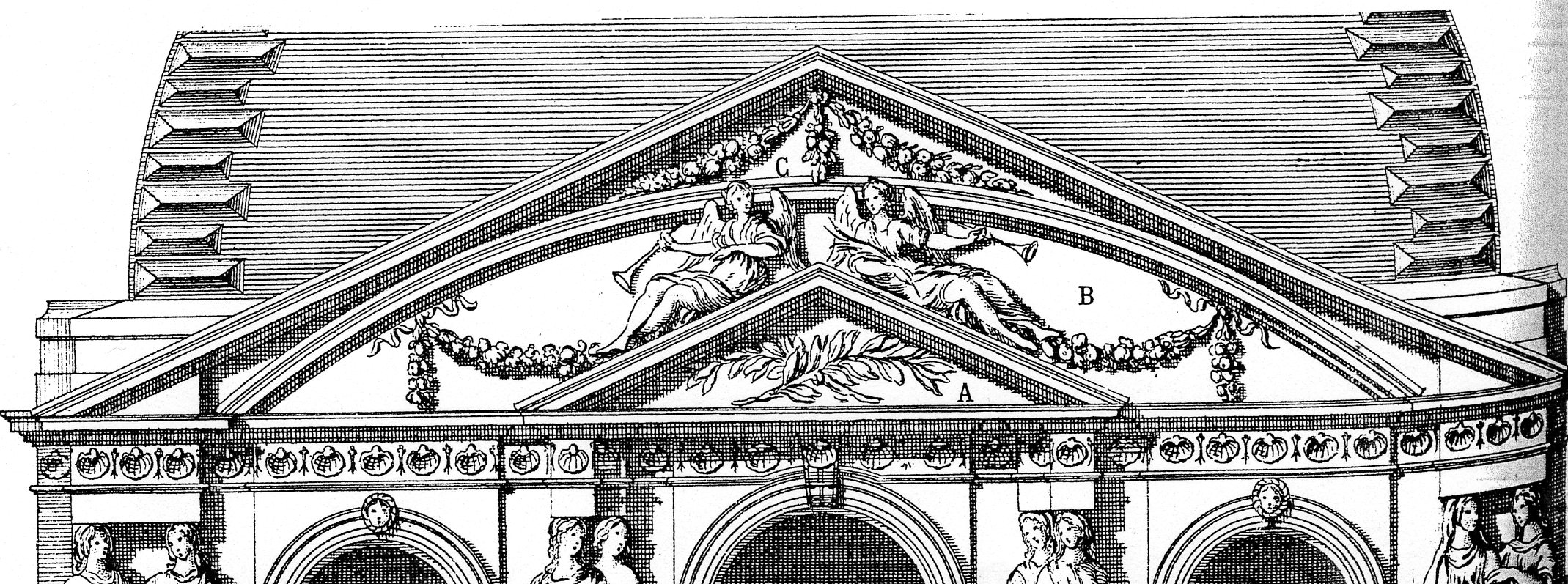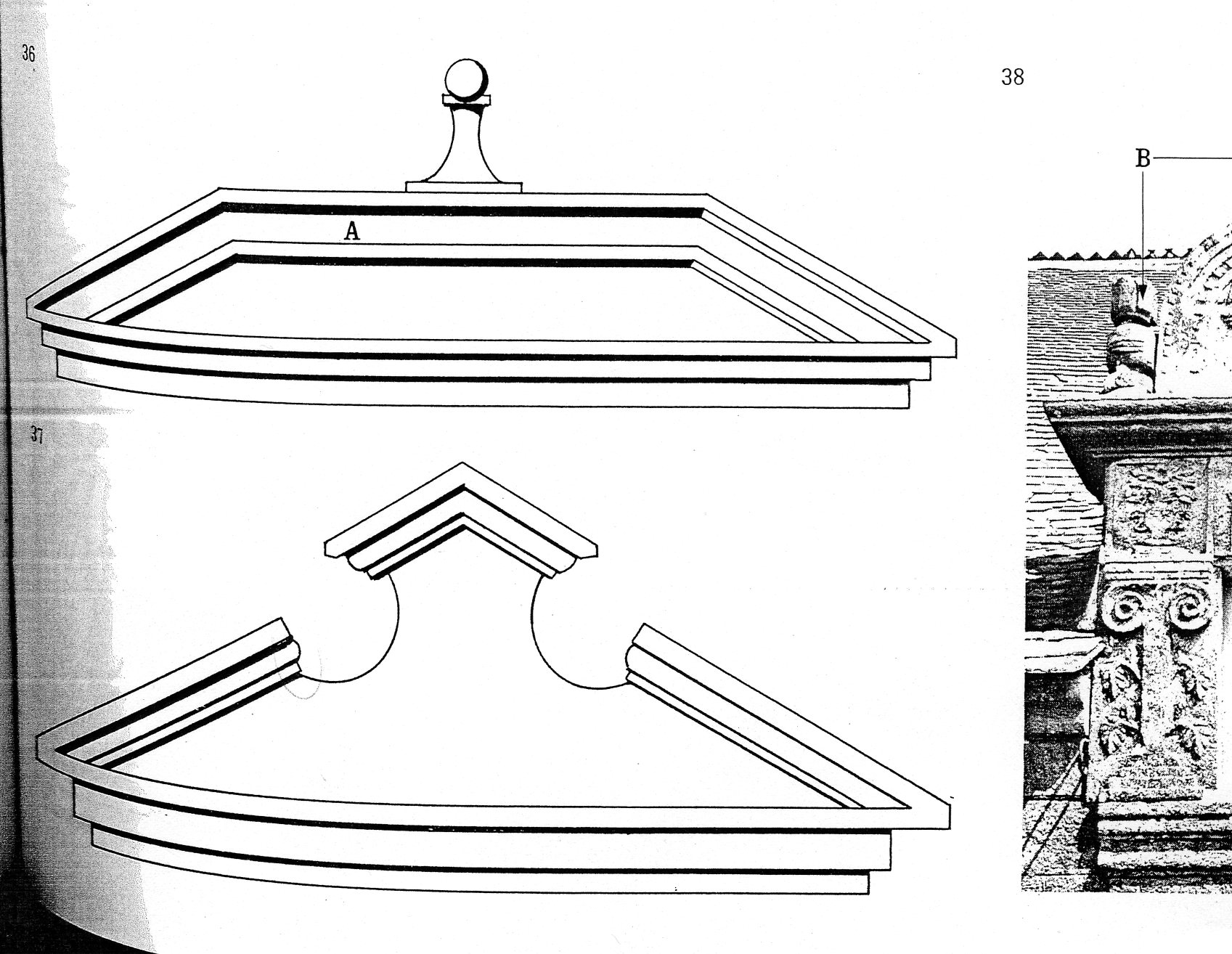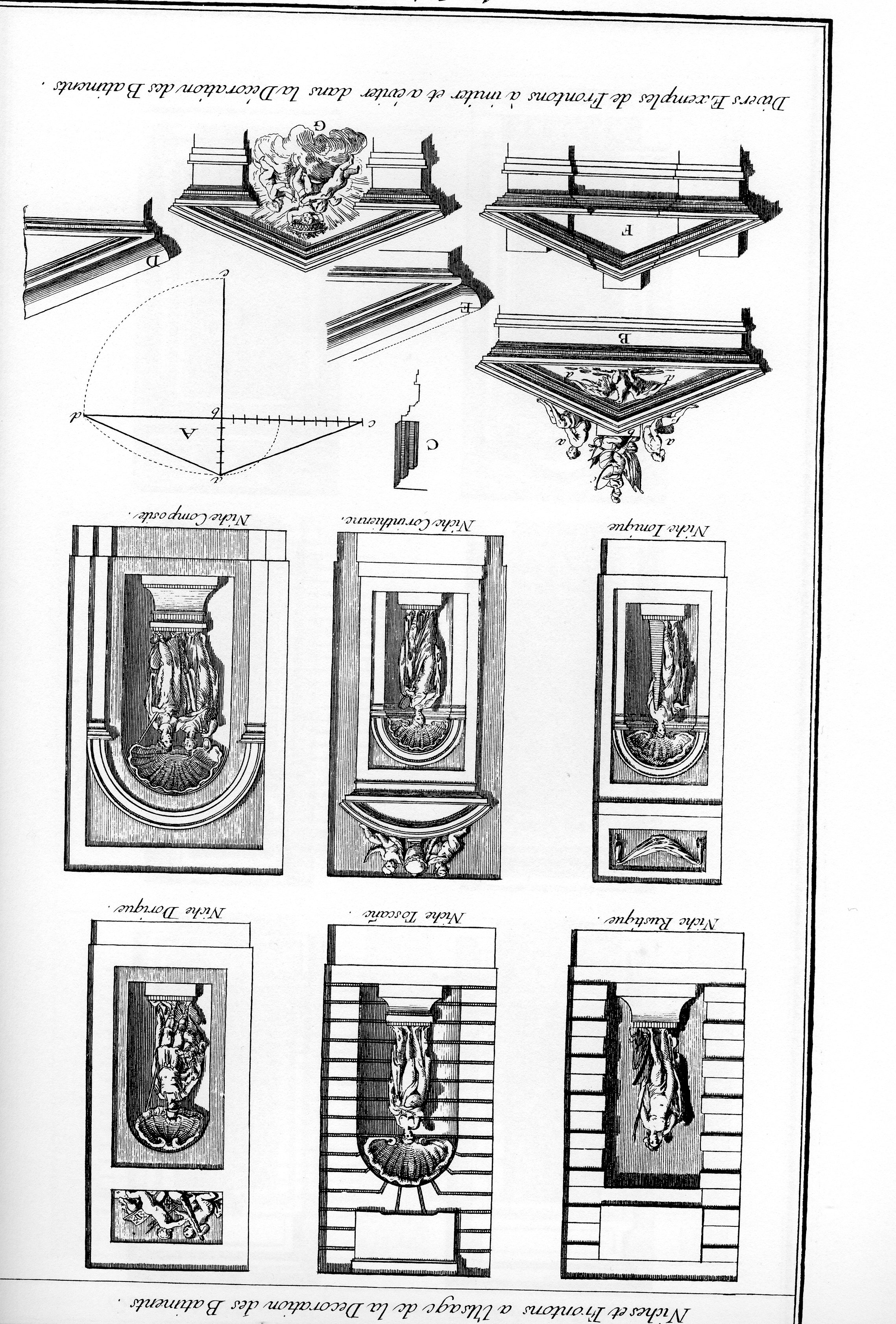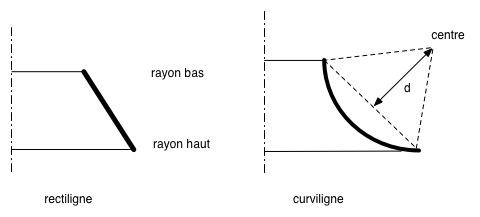
Lots of architects, from Vitruve (Vitruve, 1996) to XVIIth century architects (Palladio, 1965) have described ancient and classic styles. Lines are straight; symmetry and geometry are widely used. These styles are principally based on mouldings, each moulding having a shape (cavetto, circle...). Dimensions are given proportionally to a module (Figure). A module is subdivided into minutes (12 for Tuscan and Doric styles and 16 for Ionic, Corinthian and composite styles). When the value of the module is chosen, all the dimensions of the object are known. The basic parameters for a moulding are simple: shape and height. The shape requires from one to several parameters (type, radius, offset centre...). Complex mouldings, like cyma, echinus or break are composed of several basic mouldings. The mouldings are then revolved to form columns (radius and sweep angles) or extruded to create entablures (direction and length). Supplementary parameters are required to model specific characteristics (hood moulding, fluting...).
Lots of compound elements of the ancient and classic styles are also based on moulding (doors, windows, pediments...). From the study of each of these elements, a set of parameters and moulding profiles enable them to be described. For instance, a pediment can have various shapes (triangular, circular, with one or several arches, open, broken or scrolled pediment....). The bottom profile can go further than the top profile. A head profile can be added, etc. The pediment will thus be specified by its global dimensions, specific parameters, various profiles and by the presence or not of its sub-elements (entablure, head, oculus...).
